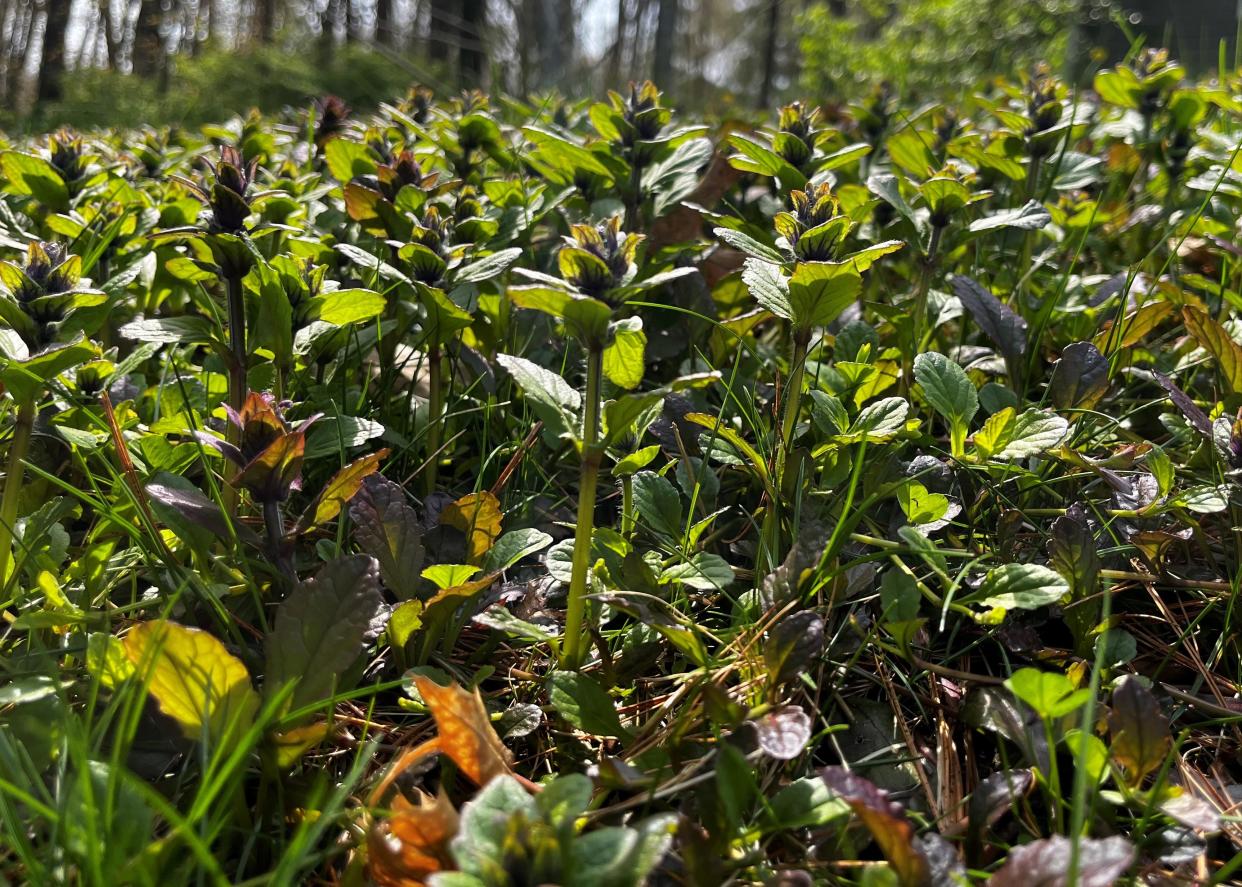Support pollinators: Don't mow your lawn!

For about eight weeks, from early March as the snow is melting to the beginning of summer, the annual springtime resurrection of the landscape passes as a blur for those of us who work in the green industry. With more work to do than anyone can expect to fit in a day, spring is equal parts exhilarating and exhausting for gardeners. As we try to keep our heads above water, one of my favorite gardening trends of the last five or 10 years gives some welcome relief.
“No-Mow May” is a relatively simple concept with big implications. Don’t mow your lawn for the month so your landscape can better support early season pollinators. A mowing pause allows lawn “weeds” like henbit (Lamium amplexicaule), white clover (Trifolium repens), or creeping Charlie (Glechoma hederacea) to flower, providing nectar and pollen sources for bees and other pollinators.
There are more than 40 million acres of irrigated turfgrass across the country. For many native insects, especially pollinators who rely on flowering plants, that acreage may as well be desert. Scratch that. Deserts are way too biodiverse to compare to managed turfgrass. Those 40 million acres of lawn may as well be asphalt. Worse, considering the amount of pesticides dumped on turfgrass each year (an estimated five to seven pounds per acre according to the University of Massachusetts), those 40 million acres are really more like superfund sites if you’re an insect. Recent legislation to curb pesticide usage in the commonwealth limits the use of neonics, a specific class of systemic pesticides that make flowering plants toxic to insects that depend on them. While this moves the state in the right direction, there’s more work to do to convince the average landowner that there is a better way to manage a lawn. No-Mow May is a great way to support the effort, diversify our landscapes, and make our yards better habitat for beneficial insects.
I’ve been practicing No-Mow May since I first bought my house in 2013. The previous homeowner planted bugleweed (Ajuga reptans) as a groundcover in a garden bed adjacent to the sidewalk. Bugleweed, a European plant species in the mint family, forms a dense mat of evergreen foliage. It’s a great groundcover for those who have the space to let it spread and there are many cultivated forms available at local garden centers. The bugleweed in my garden escaped the bed where it was planted and started spreading through the lawn in front of my house. That first spring, I let the bugleweed flower in the lawn, carefully mowing around its purple flowers and letting the honeybees from the farm down the street do their thing. The bugleweed spreads a little every year, outcompeting the turfgrass. Ten years later, my family enjoys a huge spring carpet of color, and I enjoy spending less time mowing at the height of spring.
My approach to No-Mow May might not be for everyone, but luckily there are many different options for those who may not be ready to lose lawn in favor of broadleaved groundcover. There are plenty of lawn companions, flowering plants that support or commingle with turfgrass species, that do well in our region. Many violet species, for example, work well when allowed to spread through a lawn. They are short, typically clumping plants, that will flower from spring to summer. White clover, while not native to North America, is a great lawn companion. The best thing about clover is that it fixes atmospheric nitrogen, mineralizing it and supplying a free source of fertilizer to your lawn as it grows. There are lawn seed mixes available now that feature “micro-clover,” hybrid clover plants with smaller foliage that are even more suited to playing nicely in the lawn with turfgrasses. Bluets (Houstonia caerulea) also make a great lawn companion. They have pale blue to white flowers that are only about one quarter inch in diameter, and they top out at about four inches tall.
Ultimately, the key to No-Mow May is embracing the colorful carpet your lawn can become. So, give your mower a break. Add some companion plants and let them flower and spread. The pollinators will thank you!
This article originally appeared on Telegram & Gazette: Gardening Central Mass.: Get ready for No-Mow May

